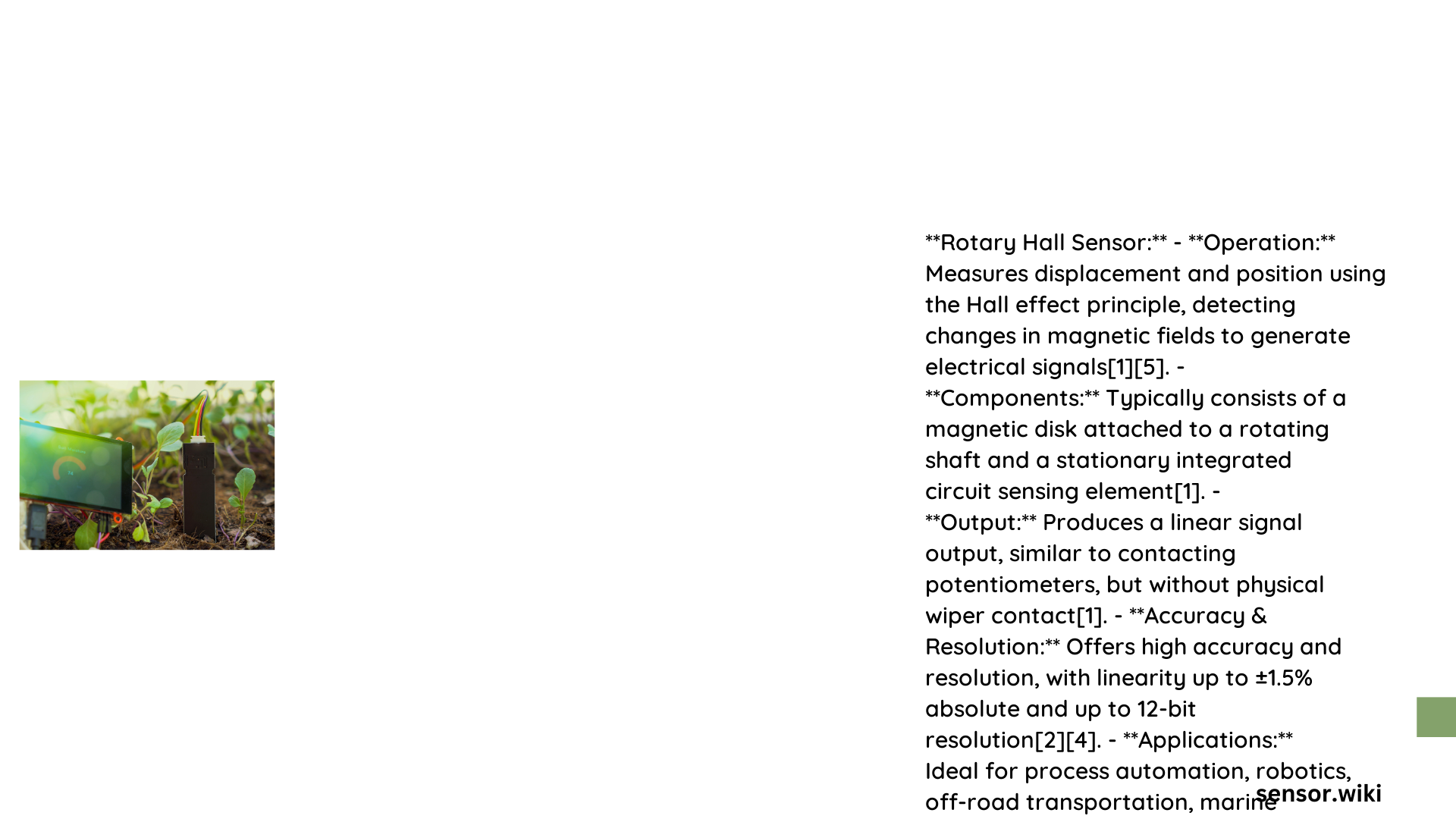Rotary Hall sensors represent sophisticated non-contact magnetic position measurement devices that leverage the Hall effect to precisely track angular displacement. These advanced sensors convert magnetic field variations into electrical signals, enabling accurate rotational position detection across diverse industrial applications. By utilizing semiconductor technology, rotary Hall sensors provide robust, wear-free measurement solutions with exceptional reliability and performance in challenging environmental conditions.
What Are Rotary Hall Sensors?
Rotary Hall sensors are specialized electromagnetic devices designed to measure angular position and rotation without physical contact. These sensors utilize the Hall effect principle, where a magnetic field generates a voltage proportional to the magnetic field’s strength and orientation.
Key Components of Rotary Hall Sensors
| Component | Function | Characteristics |
|---|---|---|
| Hall Element | Magnetic Field Detection | Semiconductor material |
| Magnet | Field Generation | Permanent or electromagnetic |
| Signal Conditioning Circuit | Signal Processing | Amplification and linearization |
How Do Rotary Hall Sensors Work?

Operational Mechanism
- Magnetic field interaction with semiconductor material
- Voltage generation proportional to magnetic field strength
- Non-contact measurement principle
- High precision angular tracking
What Are the Technical Specifications?
Voltage Range
- Typical operating voltage: 5V to 24V
- Specific models like Littelfuse 55300 Series: 4.5V to 5.5V
- McLaren Applied sensor: 5.00±0.5V DC or 9-13V DC
Output Characteristics
- Analog output options
- Digital signal generation
- Pulse-width modulation (PWM) capabilities
Performance Parameters
- Resolution: Configurable based on application
- Temperature range: -40°C to 125°C
- High accuracy positioning
Where Are Rotary Hall Sensors Applied?
Automotive Applications
- Electric power steering position sensing
- Throttle position monitoring
- Transmission angle measurement
Robotics Integration
- Precise motor control
- Joint angle tracking
- Robotic arm positioning
Consumer Electronics
- Gaming controller input
- Joystick movement detection
- Rotational input mechanisms
What Are the Advantages?
Performance Benefits
- Non-contact measurement
- Minimal mechanical wear
- High durability
- Resistance to environmental factors
- Fast response times
Technical Superiorities
- Precise angular tracking
- Wide temperature tolerance
- Low maintenance requirements
- Robust signal generation
How to Select the Right Rotary Hall Sensor?
Selection Criteria
- Required voltage range
- Output type (analog/digital)
- Temperature operating conditions
- Resolution needs
- Environmental challenges
Recommended Integration Steps
- Verify voltage compatibility
- Check signal conditioning requirements
- Implement proper grounding techniques
- Use appropriate shielding methods
Emerging Trends in Rotary Hall Sensor Technology
Future Development Areas
- Increased miniaturization
- Enhanced signal processing
- Improved temperature compensation
- Integration with IoT systems
Conclusion
Rotary Hall sensors continue to revolutionize precision measurement across multiple industries, offering unparalleled performance in angular position detection.
